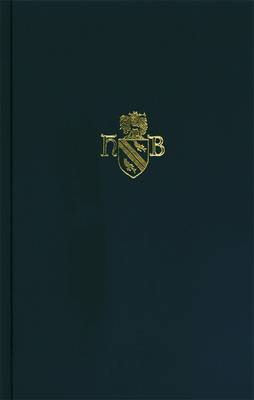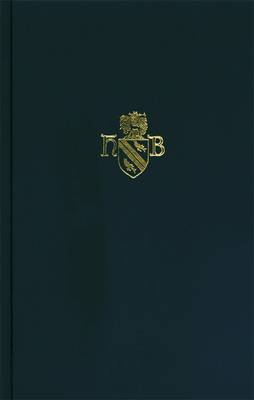
Bedankt voor het vertrouwen het afgelopen jaar! Om jou te bedanken bieden we GRATIS verzending (in België) aan op alles gedurende de hele maand januari.
- Afhalen na 1 uur in een winkel met voorraad
- In januari gratis thuislevering in België
- Ruim aanbod met 7 miljoen producten
Bedankt voor het vertrouwen het afgelopen jaar! Om jou te bedanken bieden we GRATIS verzending (in België) aan op alles gedurende de hele maand januari.
- Afhalen na 1 uur in een winkel met voorraad
- In januari gratis thuislevering in België
- Ruim aanbod met 7 miljoen producten
Zoeken
€ 177,45
+ 354 punten
Omschrijving
An important book of immense erudition. It brings into the open some major issues of Late Anglo-Saxon history, and gives a thorough overview of the detailed source material. When such outstanding learning is being used, through intuitive perception, to bear on the wider issues such as popular devotion and the reception of the monastic reform in England, and bold conclusions are bing drawn from such minutely detailed studies, there is no doubt that David Dumville's contribution in this area of study becomes invaluable. The sources for the liturgy of late Anglo-Saxon England have a distinctive shape. Very substantial survival has given us the possibility of understanding change and perceiving significant continuity, as well as identifying local preferences and peculiarities. One major category of evidence is provided by a corpus of more than twenty kalendars: some of these (and particularly those which have been associated with Glastonbury Abbey) are subjected to close examination here, the process contributing both negatively and positively to the history of ecclesiastical renewal in the 10th century. Another significant body of manuscripts comprises books for episcopal use, especially pontificals: these are examined here as a group, and their associations with specific prelates and churches considered. All these investigations tend to suggest the centrality of the church of Canterbury in the surviving testimony and presumptively therefore in the history of late Anglo-Saxon christianity. Historians' study of English liturgy in this period has heretofore concentrated on the development of coronation-rites: by pursuing palaeographical and textual enquiries, the author has sought to make other divisions of the subject respond to historical questioning.
Specificaties
Betrokkenen
- Auteur(s):
- Uitgeverij:
Inhoud
- Aantal bladzijden:
- 204
- Taal:
- Engels
- Reeks:
- Reeksnummer:
- nr. 5
Eigenschappen
- Productcode (EAN):
- 9780851153315
- Verschijningsdatum:
- 23/12/1992
- Uitvoering:
- Hardcover
- Formaat:
- Genaaid
- Afmetingen:
- 156 mm x 234 mm
- Gewicht:
- 462 g

Alleen bij Standaard Boekhandel
+ 354 punten op je klantenkaart van Standaard Boekhandel
Beoordelingen
We publiceren alleen reviews die voldoen aan de voorwaarden voor reviews. Bekijk onze voorwaarden voor reviews.









